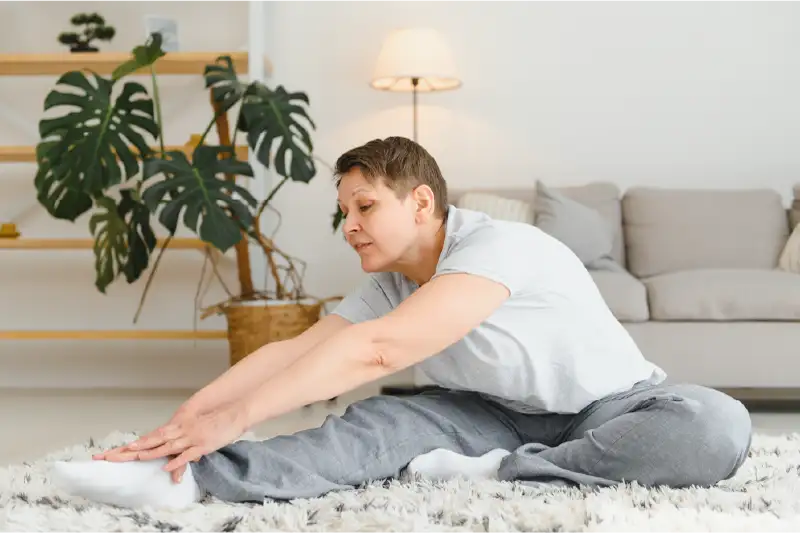Does pain interfere with your daily life? You are not alone. Millions of Americans live with chronic pain, often struggling with discomfort that affects everything from sleep and work to mood and movement. When pain becomes a daily burden, it is time to explore effective pain management options that go beyond temporary relief.
At Augusta Pain Center, our board-certified interventional pain specialists offer advanced, minimally invasive treatments designed to help patients reduce pain, regain mobility, and restore quality of life. In this guide, we explain what chronic pain is, why it happens, and how the right care plan can help you finally find relief.
What Is Chronic Pain?
Pain is your body’s built-in warning system that signals something is not right. Normally, pain fades as healing occurs. However, when pain persists for more than 3 to 6 months, it is considered chronic pain. This ongoing discomfort can remain even after the original cause has resolved, leading to what is known as Chronic Pain Syndrome (CPS).
CPS is more than just physical discomfort. It can affect mental and emotional health, creating a cycle of fatigue, frustration, and anxiety that interferes with every aspect of life. Many people find themselves unable to participate in hobbies, maintain work routines, or handle household responsibilities. Over time, chronic pain may even impact relationships and independence.
Common Conditions That Cause Chronic Pain
Chronic pain has many causes, and identifying the source is key to successful treatment. Some of the most common contributors include joint and muscle disorders, autoimmune diseases, nerve pain, and spine conditions.
Joint and muscle conditions such as arthritis, bursitis, or tendonitis cause inflammation that limits movement and leads to stiffness. Osteoarthritis, one of the most widespread forms, gradually wears down cartilage in the joints, leaving bones to rub against each other and create ongoing pain, especially in the knees, hips, and spine.
Autoimmune disorders like rheumatoid arthritis and lupus cause the immune system to mistakenly attack healthy tissues, leading to swelling, stiffness, and long-term discomfort. These conditions can affect multiple parts of the body, from joints to internal organs.
Nerve pain, or neuropathy, results from damage to the nerves that carry pain signals to the brain. It often causes burning, tingling, or shooting sensations, typically in the hands and feet. Diabetes, injuries, or certain medications can trigger this form of pain, which may worsen at night and interfere with sleep.
Spinal conditions such as herniated discs, spinal stenosis, and degenerative disc disease can compress the nerves in the back, leading to radiating pain, weakness, or numbness in the arms and legs.
Some people also experience chronic pain due to conditions like fibromyalgia and myofascial pain syndrome. Fibromyalgia causes widespread body pain, fatigue, and cognitive challenges often called “fibro fog.” Myofascial pain, by contrast, results from tight muscle knots that make it difficult to move comfortably. Both conditions benefit from a multidisciplinary approach that addresses both physical and emotional factors.
How Chronic Pain Affects Daily Life
Chronic pain does not just hurt; it disrupts your life. Studies published by The National Center for Biotechnology Information show that ongoing pain can affect everything from sleep and mood to heart health and cognitive function. The longer pain continues, the more it can wear down emotional resilience, contributing to depression, irritability, and social withdrawal.
At Augusta Pain Center, we recognize that managing pain effectively requires more than treating physical symptoms. Our approach focuses on the whole person, combining advanced interventional treatments with physical therapy and lifestyle support to help patients regain control over their bodies and lives.
How Exercise and Movement Support Pain Relief
Movement plays a powerful role in chronic pain management. It may seem counterintuitive, but gentle exercise often helps reduce discomfort over time. When pain leads you to avoid activity, muscles weaken and joints stiffen, which can actually make the pain worse. Regular movement, even at a slow pace, helps break this cycle.
Physical activity increases blood flow, strengthens muscles, improves flexibility, and releases endorphins, which are your body’s natural pain relievers. Research shows that people who maintain an active lifestyle experience less overall pain, better mood, and greater mobility.
At Augusta Pain Center, our specialists often recommend structured physical therapy or aquatic therapy for patients who need low-impact exercise options. Aquatic therapy uses the natural resistance and buoyancy of water to make movement easier on the joints, reducing pain and improving strength. It is particularly beneficial for arthritis, back pain, and those recovering from injury or surgery.
Building a Safe Stretching Routine
For many people, stretching is a simple yet effective way to manage chronic pain. A regular stretching routine increases flexibility, loosens tight muscles, and helps maintain range of motion. The key is to start gently, move slowly, and listen to your body.
If you notice that your pain increases significantly during an exercise, it is important to modify or rest. A good guideline is to stop or adjust the activity if your pain level rises by more than 2 points on a 10-point scale. Over time, consistent stretching will make movement easier and more natural.
One easy starting point is to sit on the floor with the soles of your feet together and your knees open, also known as the butterfly position. Sit tall, breathe deeply, and relax your muscles with each exhale. Once you are comfortable, gently move your knees up and down or lean forward slightly to stretch the hips. These small, controlled motions can improve mobility and relieve tension in the lower back and pelvic area.
At Augusta Pain Center, our team can guide you in developing a personalized stretching and exercise plan to complement your medical treatment and help you maintain long-term results.
When Stretching Isn’t Enough for Chronic Pain Relief
Stretching is one of the most beneficial habits for people living with chronic pain. It increases flexibility, improves circulation, and helps restore normal movement patterns. Yet for many patients, stretching alone does not fully relieve their symptoms. This is because pain often has deeper causes, such as inflamed nerves, joint degeneration, or underlying spinal issues.
At Augusta Pain Center, we believe stretching is an important foundation, but it works best as part of a broader pain management plan. Our specialists combine personalized exercise routines with evidence-based treatments that address the true source of your pain. By pairing gentle daily movement with targeted therapies, patients often experience longer-lasting relief and greater freedom of motion.
If you’ve been doing your stretches faithfully but still feel limited, that’s often a sign your pain requires additional support. Our experienced physicians can help identify why your discomfort persists and create a plan that builds on the progress you’ve already made through stretching.
How Stretching Fits into a Comprehensive Pain Management Plan
Because chronic pain affects every person differently, there’s no single routine or remedy that works for everyone. Stretching can reduce stiffness and promote healing, but its effects are strongest when paired with medical treatments that address inflammation, nerve irritation, or joint instability.
Our pain management services include a range of minimally invasive options, such as epidural steroid injections, nerve blocks, and radiofrequency ablation. These treatments target pain at its source, helping you move more comfortably so your stretching routine can be even more effective.
For patients with nerve-related conditions, spinal cord stimulation can provide life-changing results. This advanced therapy uses gentle electrical signals to interrupt pain messages before they reach the brain. Many patients find that once their nerve pain is under control, stretching becomes easier, more comfortable, and more rewarding.
At Augusta Pain Center, our philosophy is simple: stretching supports recovery, but comprehensive care sustains it. Our goal is to help you achieve measurable improvement and reclaim the mobility you’ve been missing not just for a few days, but for the long term.
Tried a Stretching Routine but Still in Pain?
If you’ve been consistent with stretching but still experience daily pain, it may be time to consult a pain management specialist. Stretching improves flexibility and reduces tension, but it cannot always correct the root problem causing chronic pain. Early evaluation can identify what is holding you back and open the door to treatments that work alongside your stretching program.
You should consider scheduling an appointment if your pain continues to interfere with your ability to move, sleep, or complete daily tasks. If stretching causes discomfort that lingers or if pain radiates through your back, arms, or legs, these may be signs of nerve involvement or joint degeneration that require professional attention.
At Augusta Pain Center, we take the time to listen, assess your movement patterns, and design a treatment strategy that supports your ongoing progress. Our approach integrates stretching, therapy, and advanced interventional techniques to ensure your plan addresses both symptoms and their underlying cause.
Getting Started with Pain Management in Augusta, GA
Since 2001, Augusta Pain Center has been a trusted partner for patients seeking long-term relief from chronic pain. Our board-certified physicians bring more than 30 years of combined experience in interventional pain medicine and take pride in helping each patient return to a life of movement and comfort.
During your visit, we will review your current exercise and stretching habits, evaluate your pain triggers, and recommend treatments that enhance your mobility while reducing inflammation and nerve irritation. This collaborative, whole-body approach ensures that stretching remains an essential but supported part of your overall recovery.
Whether your pain stems from arthritis, a spinal condition, or nerve damage, our team can help you build on the foundation you’ve created through stretching and achieve more lasting relief.
You can take the next step toward recovery by scheduling your consultation through our appointment request form or by contacting our office directly. Our specialists are here to help you move freely, live comfortably, and regain confidence in your body.





